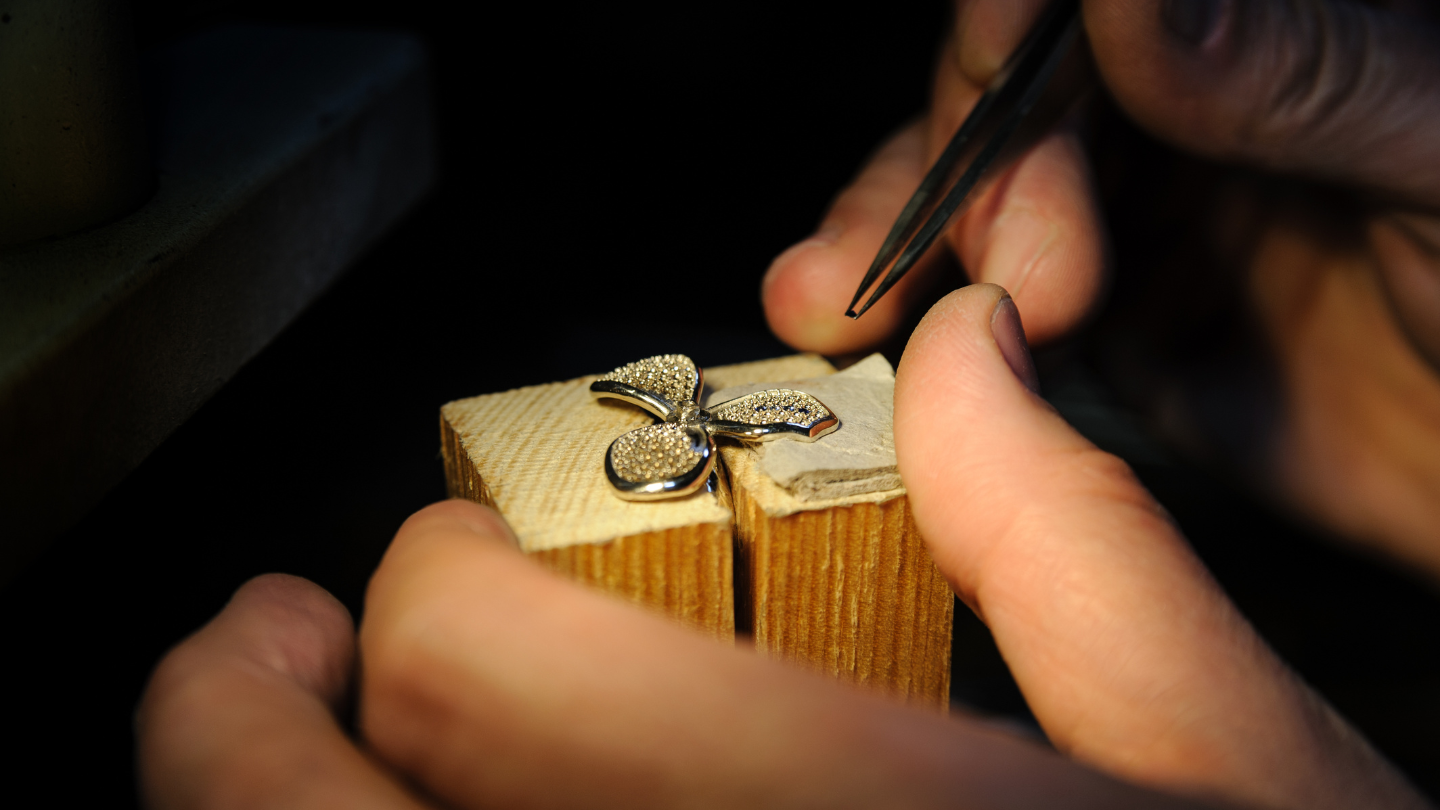
The different types of setting with a precious stone
Crimp a guide or a colored stone on a ring to make a ring is a complex task that requires the intervention of professionals specialized in this technique called crimping. There are different types of gem settings that have a different aesthetic finish, each having its advantages and disadvantages, also with regard to maintenance and the fragility of the setting.
Each type of setting presented in this article gives a unique appearance to the jewel. The choice of setting also depends on the shape and size of the diamond.
The rail setting
The channel setting is a very elegant and sober choice. This type of setting is suitable for both women and men, with small black diamonds for example. The diamonds are placed side by side to form a track.
The claw setting
The prong setting is the most common and is used for pear-shaped diamonds. It holds the diamond to the jewelry using 3 to 10 claws, which leaves the diamond almost exposed to reflect more light. However, this type of setting easily attracts dirt and dust. Although this setting may seem light, it holds the diamond in place effectively and is used for various jewelry, not just jewelry. rings.
The closed setting
The bezel setting is a timeless choice and one of the strongest types of setting, as the center stone is surrounded by metal. It is an excellent option for rings that are worn every day or for more fragile stones such as emeralds.
The halo setting
The halo setting is also used for engagement rings, as it makes the center diamond appear more prominent surrounded by a halo of gemstones. This type of setting offers many possibilities, as it is possible to use a colored gemstone in place of the center diamond for a different look.
The cathedral setting
The cathedral setting takes its name from its resemblance to a Gothic cathedral. The diamond is raised and held in place by arches, which makes the ring more imposing but also more prone to snagging on clothing. This type of setting is therefore not ideal for daily wear.
Crimp tension
It is the most original and gives the impression that the diamond is floating on the ring. In reality, the diamond is held in small grooves carved by laser in the two bars of the ring. However, this type of setting is to be well maintained because it can become fragile and the diamond may then fall if it begins to move. The stone is also less protected from shocks.
The shared prong setting
The bar setting is a mix between the claw setting and the channel setting. The diamonds are placed side by side and held together by prongs.
The bar setting
The bar setting is a variant of the channel setting, where the diamonds are held together by small parallel bars.
French pavé setting
The V-set is a variation of the pavé setting, where the diamonds are placed in V-shaped cuts. This variation is considered much more elegant.
The mysterious setting
Sign Van Cleef & Arpels, the Mystery Setting has been an emblematic know-how of the House since 1933. This innovative technique makes it possible to set precious stones while preserving their beauty thanks to gold rails in which the stones are meticulously cut. THE ruby is most often used, but this method can also be applied to sapphires, emeralds and diamonds.
With all of these setting options, you have the opportunity to choose from a variety of styles for your ring or all kinds of jewelry on 58 Facettes.







